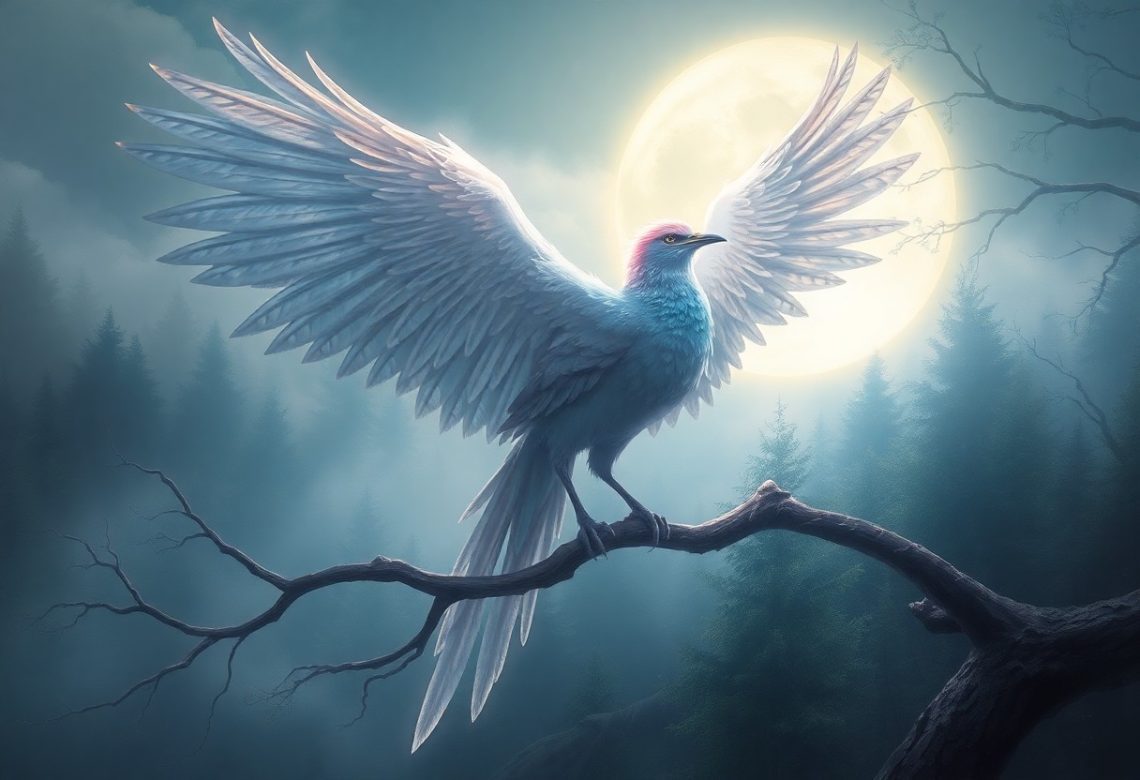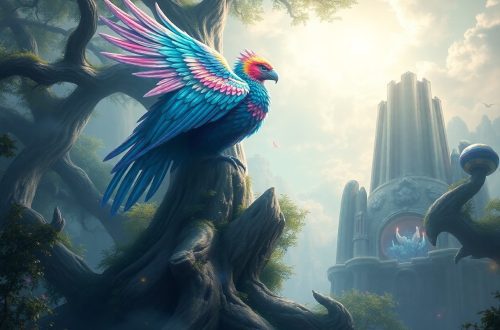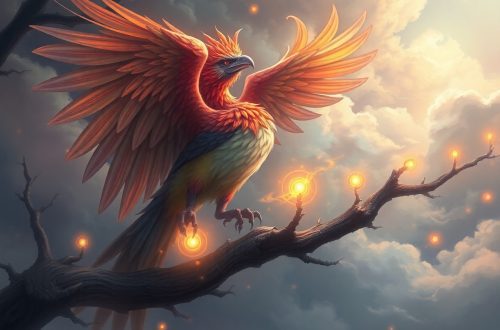Sorrow often intertwines with the beauty of mythology, and in Slavic folklore, the Sirin embodies this poignant duality. You may find yourself captivated by this mythical creature, depicted as a bird with the face of a beautiful woman, whose songs are said to evoke feelings of longing and melancholy. In this post, you will explore the origins, symbolism, and cultural significance of the Sirin, learning how its haunting melodies resonate through stories and art, reflecting the complexities of human emotion and the nature of love and loss.
Origins of the Sirin
Before delving into the mystical world of the Sirin, it’s important to explore its origins. This enigmatic creature, often depicted as a beautiful bird with a woman’s face, is deeply entrenched in Slavic folklore. The Sirin emerges from a rich cultural tapestry, resonating through centuries as a symbol of both enchantment and sorrow. By understanding its origins, you can appreciate the depth of this mythical being and its impact on storytelling across generations.
Folkloric Roots
Origins of the Sirin can be traced back to ancient Slavic tales where it was believed to inhabit idyllic regions, singing haunting melodies that both enchanted and bewitched those who heard them. As a creature that brings joy and sorrow in equal measure, the Sirin is often seen as a dual force in the folklore narratives, symbolizing the profound emotions that can shape human experiences.
Symbolism in Mythology
Origins of the Sirin’s symbolism in mythology reveal a more profound and intricate essence related to your understanding of life’s ephemeral beauty. The Sirin is frequently portrayed as a harbinger of doom; its song can lead to both ecstasy and tragedy. You might connect with the idea that this duality reflects your own life experiences—how joy and sorrow often coexist, making moments feel richer and more significant.
But the symbolism of the Sirin transcends mere storytelling; it embodies the universal themes of longing, loss, and the haunting beauty of existence. In various cultures, this mythical bird serves as a metaphor for the human condition, reminding you of the complexity of emotions. With its bewitching songs, it symbolizes your struggles with despair and hope, encouraging a deeper exploration of your own feelings and the transient nature of happiness and sadness.
Sirin in Literature
One of the most captivating aspects of the Sirin is its presence in literature, where it embodies themes of loss and beauty. Through various texts across centuries, you can explore how this mythical creature resonates with the human experience, evoking a sense of longing and reflective sorrow. The juxtaposition of sorrow and song in these literary works not only enriches your understanding of the Sirin but also encapsulates the essence of tragedy and hope that defines the human condition.
Ancient Texts
Below the surface of ancient texts, you will find that the Sirin is often depicted as a harbinger of sorrow. As you research into these writings, you will learn about its role as a symbol of unattainable desires, reflecting the struggles of the human spirit. Its haunting melodies in these old tales serve as a poignant reminder of life’s fleeting joy and inevitable heartbreak.
Modern Interpretations
Modern depictions of the Sirin take on new dimensions, allowing you to see the creature through contemporary lenses of art and literature. These interpretations often highlight the Sirin’s dual nature, showcasing both its beauty and its pain. You may find this duality resonating deeply within your own experiences, making the Sirin’s songs feel poignant and relatable in today’s context.
Consequently, modern interpretations of the Sirin often explore themes of resilience and healing, presenting the bird not just as an omen of sorrow, but also as a symbol of the transformative power of grief and remembrance. As you engage with these contemporary narratives, you will appreciate how the Sirin’s melodies can encapsulate personal and collective stories, encouraging you to reflect on your journey through loss and hope in your own life.
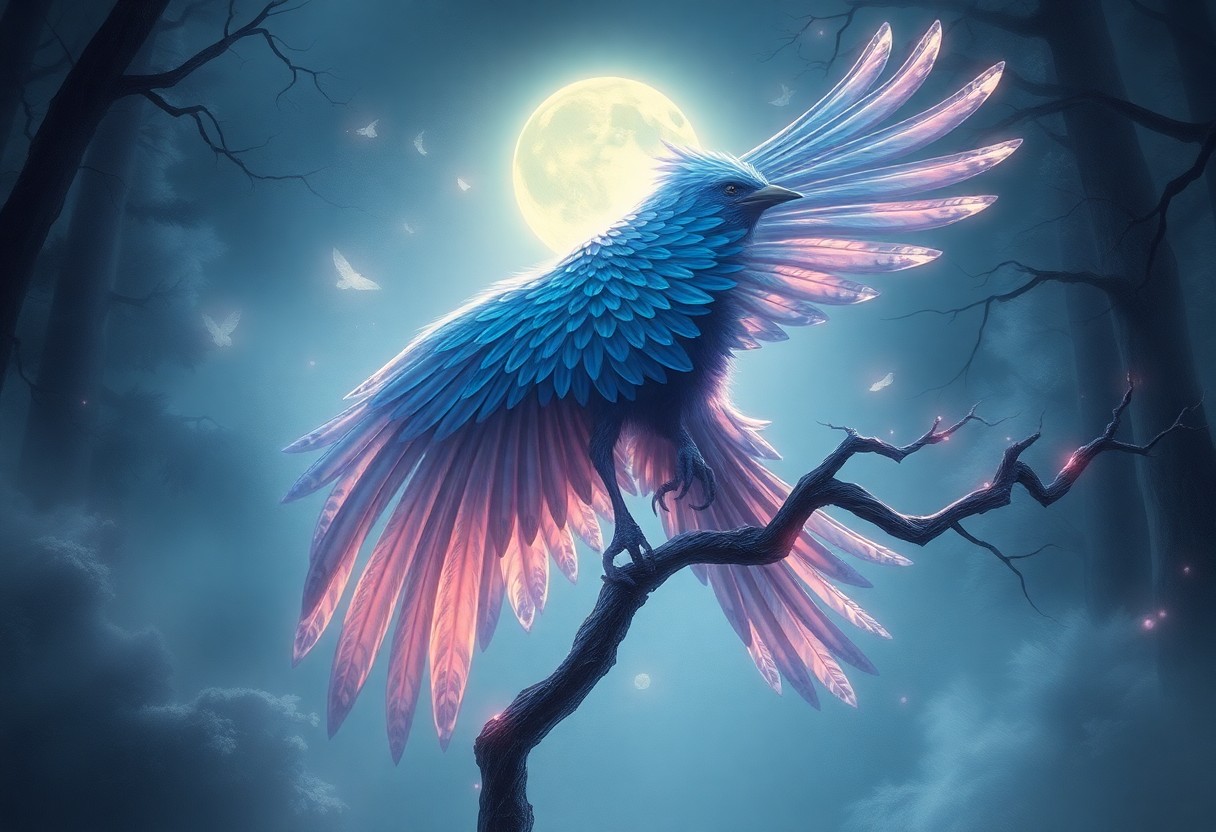
The Sirin’s Role in Music
You might be surprised to discover how integral the Sirin has been in music across various cultures. This mythical creature is often portrayed as a symbol of longing and beauty, with its enchanting melody believed to evoke deep emotions. The Sirin is celebrated in folklore and literature, often inspiring musicians and composers. As you explore this fascinating connection, you will find that the Sirin’s captivating presence enhances the lyrical depth and emotional resonance in musical pieces.
Melodic Significance
Above all, the Sirin’s melodic significance lies in its ability to convey complex emotions, intertwining sorrow and beauty. The bird’s song is often depicted as both alluring and melancholic, engaging listeners on a profound level. Through your exploration of various musical genres, you may notice how many composers channel the Sirin’s essence, crafting melodies that reflect its enchanting and sorrowful nature.
Influence on Cultural Traditions
After centuries of fascination, the Sirin’s influence on cultural traditions has manifested in diverse ways, particularly in music and storytelling. You may encounter the Sirin in folk tunes, where its melodies symbolize yearning and nostalgia. The thematic elements surrounding this mythical bird frequently appear in songs passed down through generations, connecting you to a rich tapestry of cultural heritage.
Even in modern times, the Sirin’s legacy continues to inspire artists and musicians. Many contemporary pieces draw upon the bird’s symbolic connection to sorrow and loss, ensuring that this ancient folklore remains relevant. Additionally, the Sirin often features in cultural celebrations and festivals, where music plays a vital role in expressing collective emotions and memories. By exploring these traditions, you can appreciate how the Sirin weaves its way through the fabric of cultural identity, leaving a lasting impact on artistic expression.
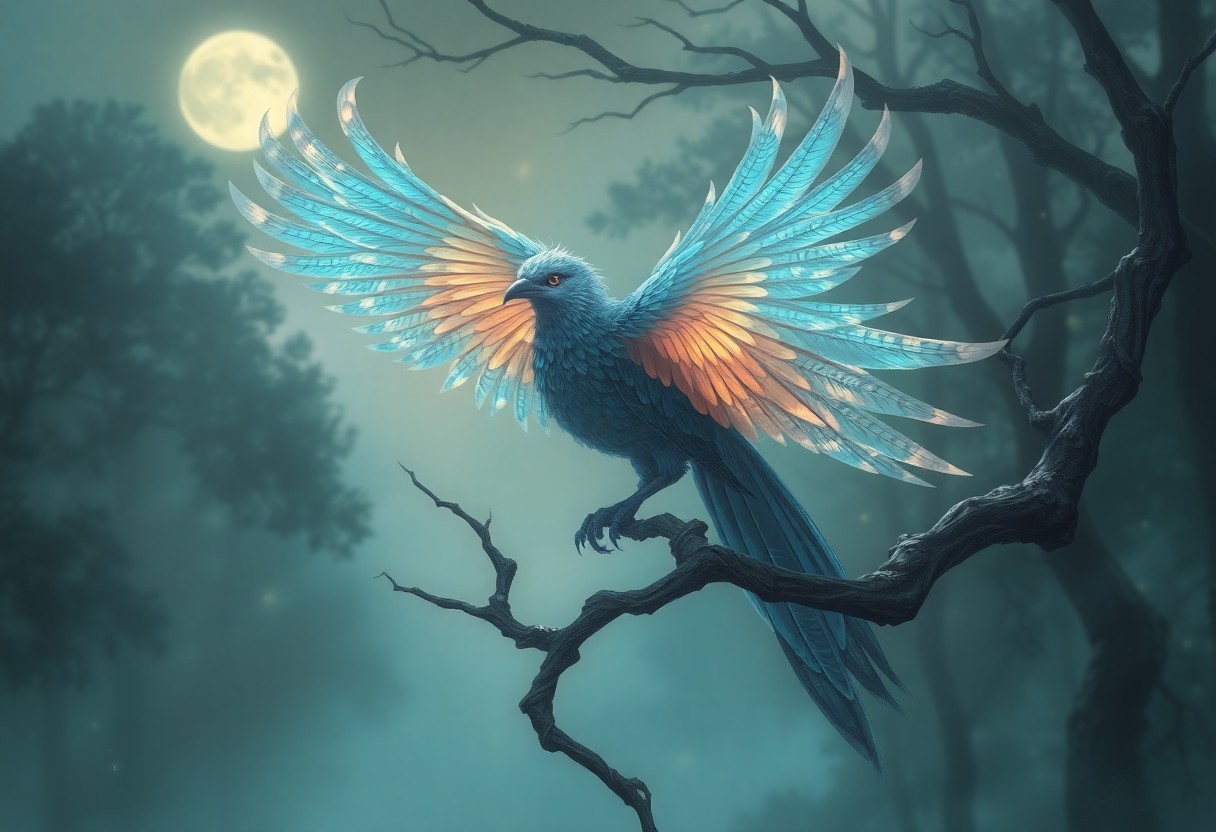
Artistic Depictions of the Sirin
Unlike many mythical creatures, the Sirin has inspired a diverse array of artistic expressions throughout history. Artists have depicted the Sirin not only as a symbol of beauty and sorrow but also as an ethereal being that captivates the imagination. This blending of themes has allowed the Sirin to resonate with audiences across various cultures and eras, creating a rich tapestry of visual lore that you can explore.
Visual Art through Ages
Before the modern era, the Sirin often graced the walls of churches and palaces in Eastern Europe and the Middle East. Artists used iconography to convey the duality of the Sirin’s nature, capturing both its enchanting voice and the melancholic themes associated with its myths. Through intricate frescoes, sculptures, and manuscripts, these early representations reflected your ancestors’ understanding of beauty and tragedy intertwined in life.
Sirin in Contemporary Art
After centuries of artistic evolution, the Sirin has found its place in contemporary art, influencing a new generation of creators. Modern artists incorporate the Sirin’s symbolic aspects into their work, offering fresh interpretations that resonate with contemporary themes of loss and longing. Your experience of art today can be enriched by recognizing how these artists draw from the ancient legacy of the Sirin, blending traditional motifs with modern materials and techniques.
The use of the Sirin in contemporary art often serves as a commentary on modern societal issues, blending historical significance with current emotional landscapes. Artists might juxtapose the bird’s ethereal beauty against urban environments or explore themes of isolation and connection through the Sirin’s dual nature. This dialogue between the past and present enables you to see the Sirin as more than just a myth; it becomes a mirror reflecting your own experiences and emotions in a fast-changing world.
Psychological Interpretations
Once again, the Sirin emerges as a complex symbol in psychological studies, representing the intricate relationship between joy and sorrow. Many interpretations suggest that this mythological creature embodies the human experience of loss through its haunting melodies. You may find that the Sirin’s songs serve as a reflection of your inner turmoil, inviting you to explore the depths of your emotions and reconsider the ways you perceive happiness and melancholy in your life.
The Sirin as a Symbol of Grief
After delving into the Sirin’s symbolism, it becomes evident that it resonates deeply with themes of grief. This extraordinary bird is often seen as a harbinger of misfortune, symbolizing the inevitable sorrow that accompanies loss. You might find that the Sirin’s mournful songs echo your own experiences with grief, offering a sense of understanding and catharsis in your journey through heartbreak.
The Dichotomy of Beauty and Sorrow
Dichotomy is at the heart of the Sirin’s portrayal, where beauty intertwines delicately with sorrow. This duality captivates your attention, beckoning you to explore the complexity of emotions and the profound connections between joy and suffering. The Sirin’s exquisite appearance contrasts sharply with its tragic nature, urging you to reflect on how beauty can coexist with pain in your own life.
Plus, this interplay between beauty and sorrow serves as a reminder that life is not merely about moments of happiness but also the lessons learned through heartache. The Sirin’s enchanting song can represent your struggle to find meaning in personal loss while still appreciating the vibrant experiences that bring joy. You may discover that embracing this dichotomy allows for a richer understanding of your emotional landscape, leading to deeper connections with yourself and others.
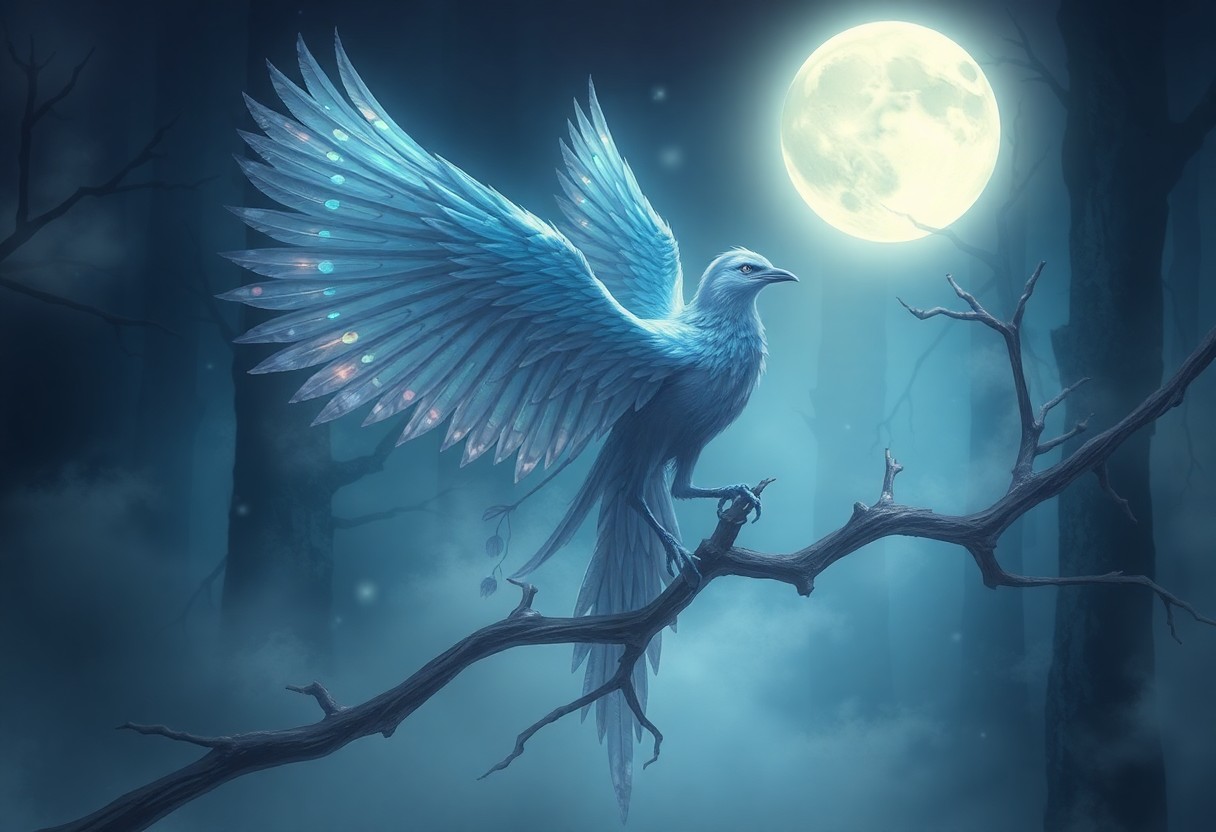
Sirin in Modern Culture
After centuries of being a symbol of sorrow and mysticism, Sirin continues to inspire modern artists, writers, and musicians. Your understanding of this mythical creature enhances not only your appreciation of contemporary works but also the cultural narratives that intertwine the past and present. Today, you will find Sirin’s influence flowing through various forms of art and storytelling, echoing her enchanting melodies and forlorn tales in the vibrant cultural tapestry of our time.
Representation in Media
Before delving into the visual arts and literature, you may notice Sirin’s presence in popular media, where her captivating essence often serves as a metaphor for unrequited love and the duality of beauty and sorrow. Films, television shows, and video games frequently draw inspiration from Sirin’s legend, intertwining her themes into plots that resonate with contemporary audiences. This representation helps you explore the complexities of human emotions vis-à-vis mythological figures.
Influence on Popular Culture
Popular culture has embraced Sirin, integrating her character into various mediums, including fashion, graphic novels, and music. You can find her imagery influencing not just artistic trends but also fashion statements that connect the enchanting sadness of her narrative to your lives. Her melancholic beauty invites you to reflect on your own emotions and experiences, bridging myth and modernity.
Representation in popular culture illustrates how deeply Sirin’s influence permeates your everyday life. Iconic imagery and storytelling techniques inspired by Sirin can be found in various contemporary art forms. You might discover her essence in popular music lyrics or see her depicted in vibrant graphic illustrations, each echoing her themes of longing and beauty. As these artistic interpretations evolve, they invite you to confront and embrace the rich emotions that accompany loss and longing, ultimately making Sirin a relevant and relatable figure in your modern experiences.
Conclusion
Considering all points, you can appreciate that Sirin, the Bird of Sorrow and Song, embodies a profound duality in mythology. Its enchanting melodies resonate with beauty, yet they also hint at underlying sadness, reflecting the complexities of human emotion. By understanding Sirin’s significance within folklore, you gain insight into the cultural narratives that explore themes of loss, love, and the transcendent power of music. This legendary creature invites you to investigate deeper into the rich tapestry of stories that shape our understanding of the world around us.
